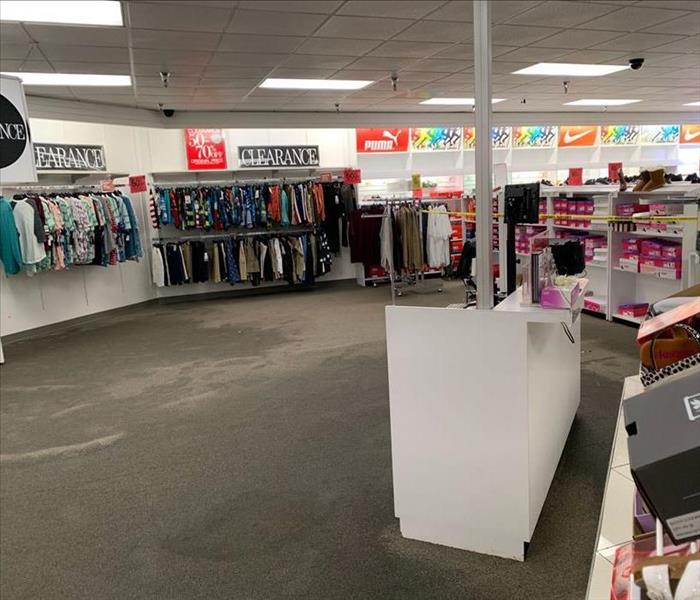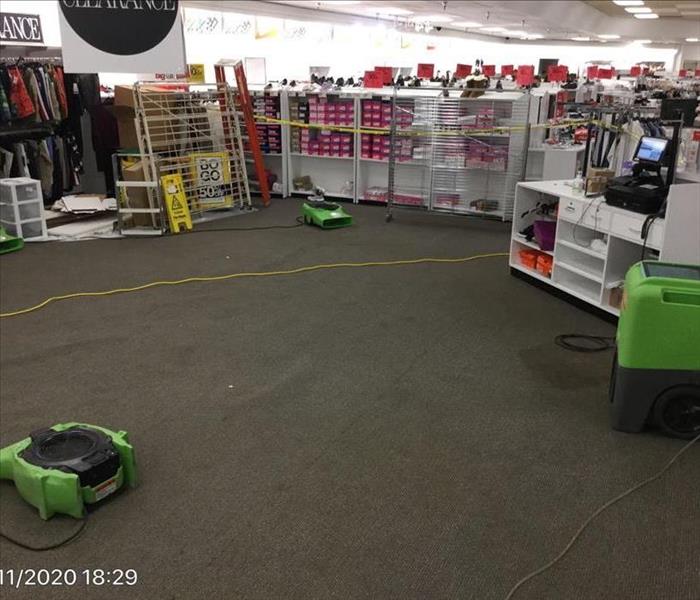
Step 4: Drying and Dehumidification
Our Water Damage Restoration Process
Once the excess water has been removed, the floors and walls may appear dry, but water extraction is not enough. We receive many calls for service after DIY water mitigation simply because a home was not dried properly and the homeowner is faced with mold growth. This is a risk that can easily be mitigated by a professional water damage company, such as SERVPRO of Spring/Tomball.
If you do a quick inspection you’ll see that even after extraction of hundreds or thousands of gallons of water your floors and walls will still be wet to the touch. Here’s why. Nearly all building materials (wood, drywall, flooring materials) are porous. Water gets into porous materials and, once inside, the water is hard to remove. This retained water can cause the materials in your floors and walls to break down, warp, swell or suffer mold damage. Drying and dehumidification are a critical next step. SERVPRO of Spring/Tomball has the proper equipment and trained professionals to dry your home or business out!
Drying / Dehumidification
Our Professionals will use room measurements, temperature, and relative humidity to determine the optimal number of air movers and dehumidifiers to dry your home or business. We’ll carefully monitor the progress using moisture meters until the materials return to acceptable drying goals.
- Use Dehumidification Equipment
- Use Monitoring Equipment to Track Progress
Monitor Floor and Walls
We check the moisture levels to monitor the drying process.
- Monitor Floors
- Monitor Walls
Drying Equipment
- Industrial-grade dehumidifiers help prevent secondary water damage like swelling and warping of floors, walls, and furniture.
- High-speed air movers create airflow across walls, carpets, pads, and furniture, which accelerates the evaporation of moisture.






 24/7 Emergency Service
24/7 Emergency Service




